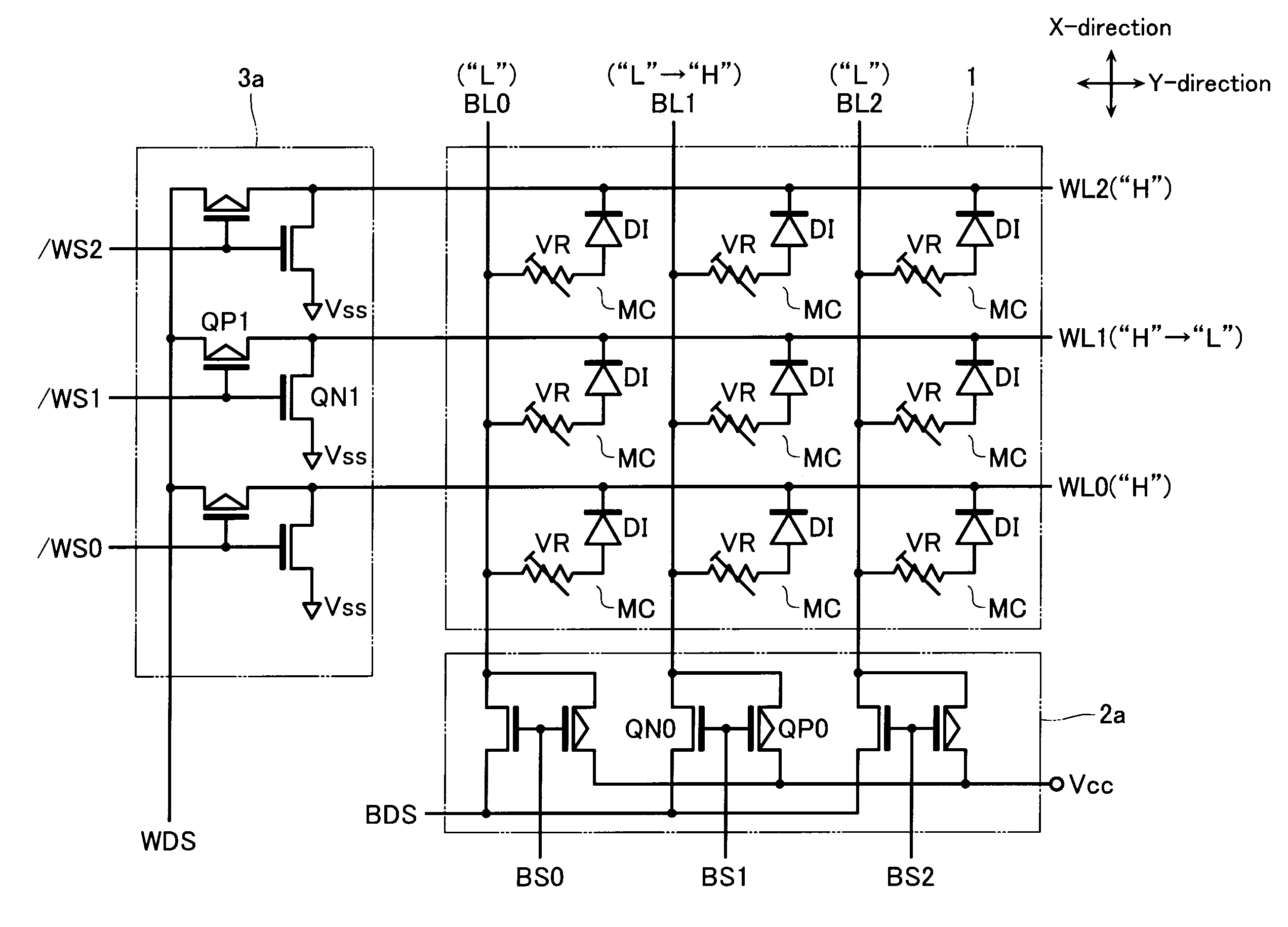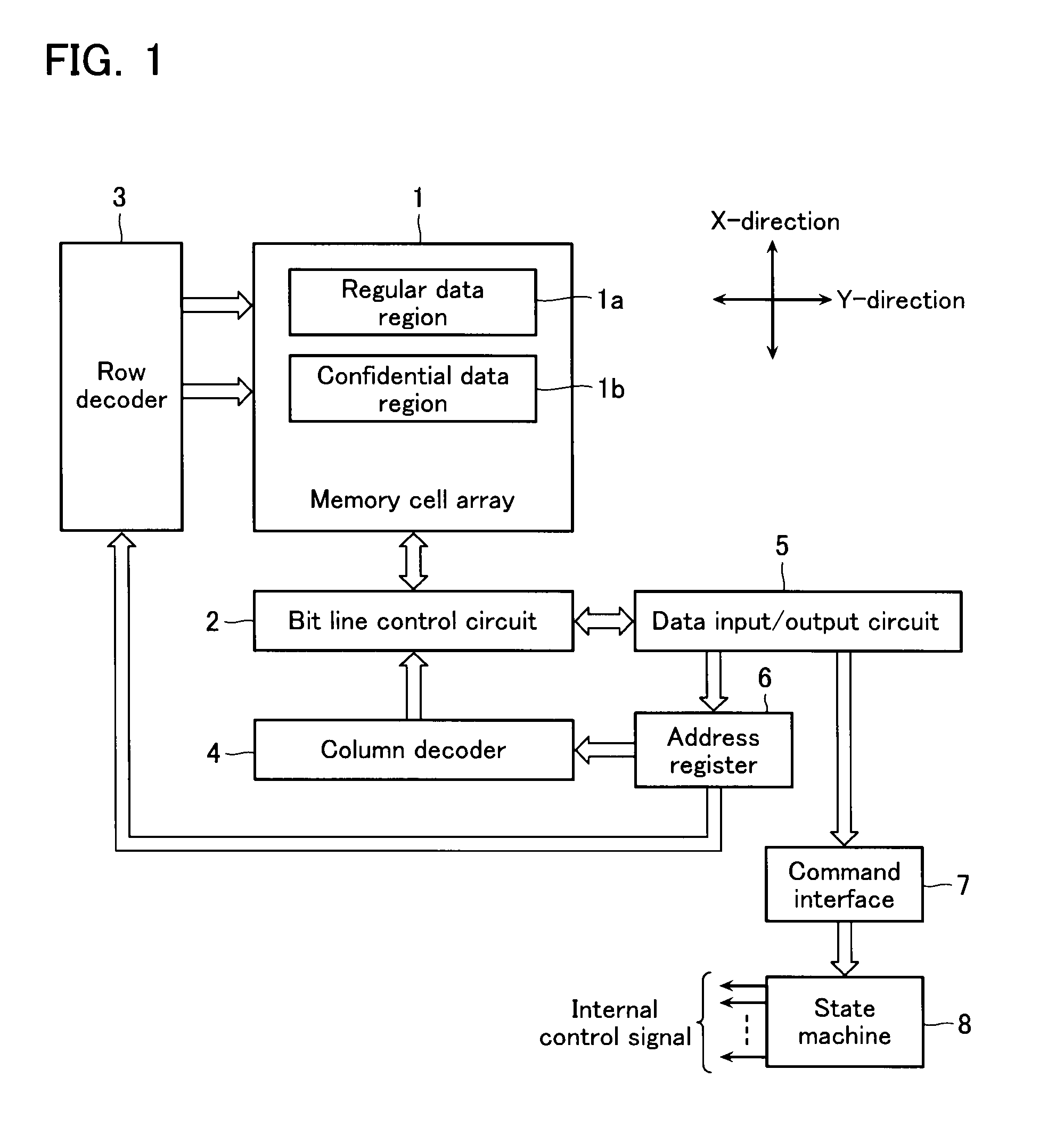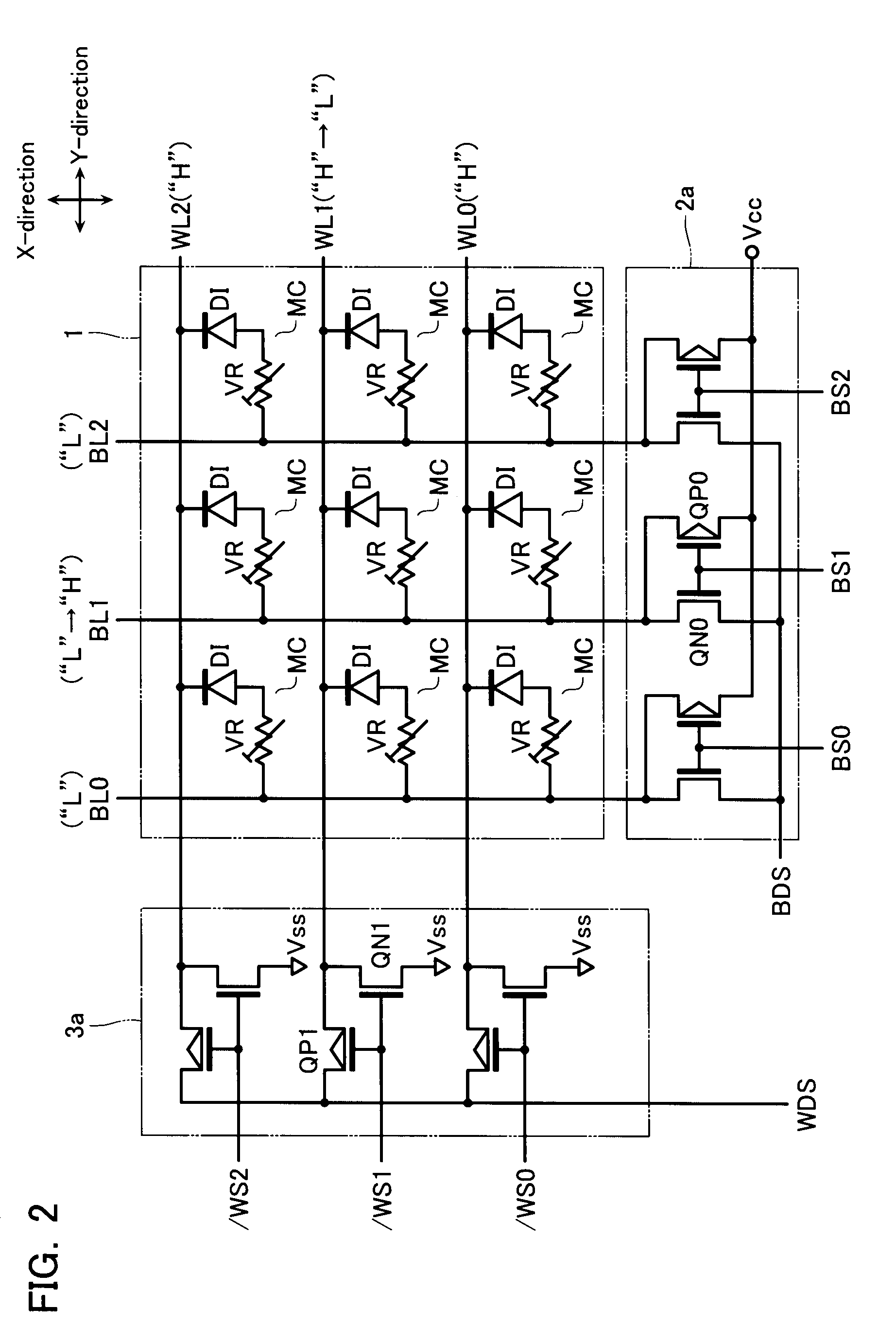Nonvolatile semiconductor memory device
a semiconductor memory and non-volatile technology, applied in static storage, digital storage, instruments, etc., can solve the problems of increasing the proportion of circuits in the chip, the eeproms of floating gate type approaching their limit, and the eeproms of floating gate type becoming more and more complicated
- Summary
- Abstract
- Description
- Claims
- Application Information
AI Technical Summary
Problems solved by technology
Method used
Image
Examples
first embodiment
[0030][Entire Structure of Nonvolatile Semiconductor Memory Device according to First Embodiment]
[0031]Referring to FIG. 1, the entire structure of a nonvolatile semiconductor memory device according to an embodiment of the present invention is first described. In the first embodiment, the nonvolatile semiconductor memory device is described as a resistive memory device that includes variable resistive elements VR as memory cells MC as described later. FIG. 1 is a block diagram of the nonvolatile semiconductor memory device according to this embodiment of the present invention. The nonvolatile semiconductor memory device according to this embodiment includes a memory cell array 1 and peripheral circuits as a control circuit that performs control operations such as data rewriting, holding, and reading.
[0032]The memory cell array 1 includes a regular data region 1a and a confidential data region 1b. Although the regular data region 1a and the confidential data region 1b are provided i...
second embodiment
[0089][Structure of Nonvolatile Semiconductor Memory Device according to Second Embodiment]
[0090]Next, a nonvolatile semiconductor memory device according to a second embodiment of the present invention is described. The nonvolatile semiconductor memory device according to this embodiment differs from that according to the first embodiment in being a NAND-type EEPROM including memory cells MC that each change the threshold voltage by injecting and releasing electrons into a floating gate.
[0091]FIG. 10 is a circuit diagram of a memory cell array 1 and its peripheral circuits. The memory cell array 1 of the nonvolatile semiconductor memory device of this embodiment is formed by arranging nonvolatile memory cells MC in a matrix fashion, as shown in FIG. 10. The nonvolatile memory cells MC can be electrically rewritten. Each of the memory cells MC includes an n-type source / drain diffusion layer formed on p-well of a silicon substrate, and is a stack gate structure including a floating g...
PUM
 Login to View More
Login to View More Abstract
Description
Claims
Application Information
 Login to View More
Login to View More - R&D
- Intellectual Property
- Life Sciences
- Materials
- Tech Scout
- Unparalleled Data Quality
- Higher Quality Content
- 60% Fewer Hallucinations
Browse by: Latest US Patents, China's latest patents, Technical Efficacy Thesaurus, Application Domain, Technology Topic, Popular Technical Reports.
© 2025 PatSnap. All rights reserved.Legal|Privacy policy|Modern Slavery Act Transparency Statement|Sitemap|About US| Contact US: help@patsnap.com



